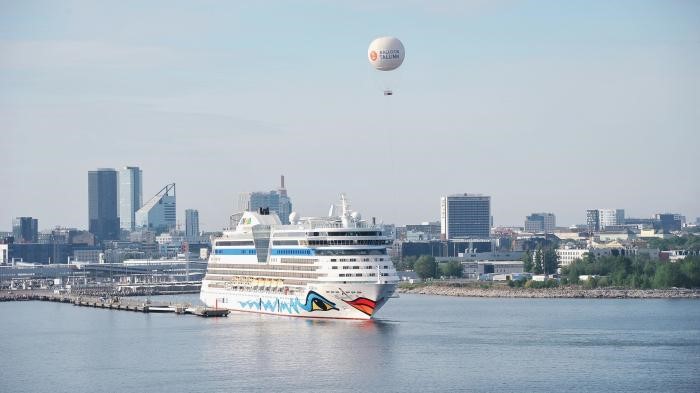Decision of the German Bundesgerichtshof of April 27, 2017, file no. I ZR 247/15: “AIDA Kussmund” (“AIDA Kissmouth”)
In “AIDA Kissmouth”, the German Bundesgerichtshof (“BGH”), Germany’s highest civil court, ruled on the interpretation of the “works in public places” exception pursuant to § 59 (1) German Copyright Act that implements Art. 5 (3) lit. h Directive 29/2001 (“Copyright Directive”). The court held that the upload of a photograph of a cruise liner showing a copyright protected artwork on the side panels of the cruise liner infringes the right of making a work available to the public (§ 19a German Copyright Act) but falls within the “works in public places” exception of § 59 (1) German Copyright Act. For the BGH, the interpretation of § 59 (1) German Copyright Act in light of the Copyright Directive did not raise reasonable doubts, so it did not consider a referral to the CJEU justified.
Background
In the case at hand, the claimant was the operator of cruise liners, inter alia the cruiser “AIDA”. The nose and the side panels of the cruiser were decorated with artwork, namely a big mouth (the “Kissmouth”) at the nose of the cruiser and wave shaped eyebrows on the side panels of the ship. The claimant owned the exclusive copyright in that artwork. The defendant, an operator of excursions and shore leaves for cruises in Egypt, used a photograph on its website showing the cruiser, AIDA, including the Kissmouth artwork on its website:

The claimant argued that this use of the photo on the defendant’s website infringed the claimant’s right of making available to the public the artwork pursuant to § 19a German Copyright Act (implementing Art. 3 (2) Copyright Directive).
The “works in public places” exception of § 59 German Copyright Act and the crucial questions of the case
According to § 59 German Copyright Act, it is
“[…] permissible to reproduce, distribute and make available to the public works located permanently in public roads and ways or public open places by means of photographs or film.”
As the artwork was applied to a cruise liner that was cruising in the open sea, the court had to decide whether the requirements of § 59 German Copyright Act were met, especially whether such artwork on a moving vessel could be regarded as “located permanently in public roads and ways or public open places”.
The BGH first decided that the Kissmouth would qualify as a work of applied art and therefore enjoyed copyright protection. The BGH also held that the right of making available a work to the public according to § 19a German Copyright Act was infringed but eventually justified under the exception of § 59 (1) German Copyright Act as the requirements of this provision were met.
According to the BGH, a work is located in “public roads and ways or public open places” if it can be spotted from such locations. It is irrelevant for § 59 (1) German Copyright Act whether the work as such is accessible to the public. Such locations can be regarded as “public” if they are accessible for everybody irrespective of whether the location belongs to the public or constitutes private property. Moreover, the mention of “roads, ways or places” in § 59 (1) German Copyright Act is not exhaustive and covers all locations that – like ways, roads or places – are in the open.
The BGH held that the cruise liner was located in a “public place” within the meaning of the provision as seaways were accessible for the public and the cruise liner could be spotted from such public seaways. Moreover, the court mentioned that the cruise liner could also be spotted from land (which was also publicly accessible).
Furthermore, the BGH ruled that it does not matter that the vessel containing the artwork was moving and thereby changing its location all the time. It held that the provision of § 59 (1) German Copyright Act also covered cases where the work would be located “consecutively in various public places”.
Finally, the BGH decided that the “AIDA Kissmouth” was also “permanently” located in public places. “Permanently” within the meaning of § 59 (1) German Copyright Act did not mean that the work must be “permanently” located at the same place, but “permanently” from a time perspective. In that respect, the BGH explained that a referral to the CJEU was not justified. In the BGH’s view, there was no reasonable doubt that a work was “located permanently in public places” within the meaning of Art. 5 (3) lit. h Copyright Directive if it was located for a longer period of time at various public places.
Summary and comment
In summary, the BGH decision clarified that the “works in public places” exception according to § 59 German Copyright Act (Art. 5 (3) lit. h Copyright Directive) also applies with respect to works contained on moving objects like a vessel as long as the work can be spotted from publicly accessible places like seaways or the mainland. The exception also applies if a work is located at various public places for a longer period of time (“permanently”). The decision “AIDA Kussmund” has thus clarified a number of open questions regarding the interpretation of the “works in public places” exception in light of the Copyright Directive.
_____________________________
To make sure you do not miss out on regular updates from the Kluwer Copyright Blog, please subscribe here.
Kluwer IP Law
The 2022 Future Ready Lawyer survey showed that 79% of lawyers think that the importance of legal technology will increase for next year. With Kluwer IP Law you can navigate the increasingly global practice of IP law with specialized, local and cross-border information and tools from every preferred location. Are you, as an IP professional, ready for the future?
Learn how Kluwer IP Law can support you.


